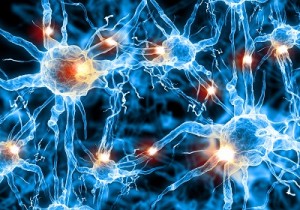- Calls to this hotline are currently being directed to Within Health or Eating Disorder Solutions
- Representatives are standing by 24/7 to help answer your questions
- All calls are confidential and HIPAA compliant
- There is no obligation or cost to call
- Eating Disorder Hope does not receive any commissions or fees dependent upon which provider you select
- Additional treatment providers are located on our directory or samhsa.gov
Eye Movement Desensitization and Reprocessing (EMDR) in Eating Disorder Treatment
Individuals with trauma are more likely to develop eating disorders than those without trauma1. Tagay (2010) reported that 63.3% of anorexic clients and 57.7% of bulimic clients report a history of traumatic events2.
Trauma can be caused by one disastrous event or it can be the accumulation of many smaller distressing events.
Some causes for trauma include:
- Sexual or physical abuse
- War conditions
- Moving
- Family conflict
- Divorce
- Death of a loved one
- A highly controlled family life
- Neglect
- Experiencing childhood illness
- Addiction or illness in a family member
- Suicide or murder of a family member
- Witnessing violence
- Being bullied
Eating Disorders as an Unhealthy Coping Mechanism
When trauma occurs the brain does not process the event properly. The trauma is buried in the unconscious mind and can be triggered again in the present. Eating disorder behaviors can begin as a way to avoid the thoughts and feelings of the past traumatic event.
The disordered eating thoughts and behaviors can be used to suppress unwanted emotions, deal with stress, and be used as a way to cope with life. These coping behaviors can become a habit that is hard to break. With time the behavior is used for everything and the eating disorder takes over.
Advantages of EMDR
One advantage of using EMDR is that the client does not need to be re-traumatized by bringing up all the details of the trauma. EMDR sets up a learning state that allows these experiences to be stored appropriately in your brain.
The trauma can be remembered but without the emotional charge that once accompanied the event. EMDR is the treatment of choice for veterans returning from combat with Post Traumatic Stress Disorder (PTSD).
Learning About EMDR
The way I got acquainted with EMDR was through some of my clients who had experienced the use of EMDR, and they said that EMDR had been very beneficial in their recovery from an eating disorder. Although EMDR was controversial at the time, I wanted more information, so I researched the subject and enrolled in the EMDR Institute.
I worked with Dr. Francine Shapiro and her associates to learn the process. Dr. Francine Shapiro created the EMDR procedure in 1987. I used Dr. Shapiro’s very detailed eight phases of treatment, the EMDR Protocol, and I began to see positive results in my clients who were doing EMDR. This is when I hired a specialized EMDR therapist, and EMDR became an integral part of the program at Rebecca’s House Eating Disorder Treatment Programs.
Alternative Treatments for Those Who Need It
One 23-year old, female client with Bulimia Nervosa and Anxiety Disorder had been in treatment for Bulimia Nervosa since she was 15 years old. She was making progress with the other work she was doing at Rebecca’s House, but she could not advance to the next Phase in our recovery process.
This client had been going from one treatment center to the next for the last 8 years. I wondered if her failure to leave the safety net of treatment centers might be one of the contributing causes of her continued relapses. She was afraid to become a responsible adult and something was holding her back.
How EMDR Can Help
In addition to the other treatment modalities we were using, we added EMDR sessions with a trained EMDR professional to her schedule. After a few sessions the client was interviewing for a part-time job and applying to the local community college for admission.
The treatment team made the decision to advance her to the next Phase of the program. She abstained from her eating disorder behaviors, and with the safety net of Rebecca’s House she was able use healthy coping behaviors for her stress while making a life for herself. She soon was looking for a room to rent. This was a great breakthrough. Today she has a normal healthy life.
Conditions for EMDR Participation
There are four conditions that must be met before EMDR can be used with a client who has an eating disorder:
- The first and most important step is to make sure the therapist has been trained in the EMDR process and adheres to the protocol.
- Medical stabilization is a must. The brain also must be getting proper nutrition so it can function effectively for the process.
- The client must have a structure of support around them. This can be a network of friends, family, religious or support groups.
- The client needs to be able to access a peaceful, calm, safe place to go to in their mind during the process and whenever feeling overwhelmed. This provides a tool to help them tolerate any distressing feeling and provides a way for them to “ground” themselves.
It is important to understand that some people with eating disorders are not candidates for the EMDR process. Both PTSD and eating disorders clients share the same symptom of not knowing what they are feeling and have high rates of dissociation3.
One of Dr. Shapiro’s steps in the EMDR process is to test for Dissociative Disorders. As the client proceeds with recovery they may become appropriate for the use of EMDR in the future.
How EMDR Sessions Work
EMDR sessions are not scary. At first, the therapist will do a lot of history taking and tell you all about the process. You will be asked about current symptoms that you are experiencing and your desired outcome of the process. Next, you will associate an anchor with your safe place. Then you will discover irrational beliefs that you may be harboring.
The therapist will use an object, light board or their fingers to help guide your eyes to the left and right several times. If this is uncomfortable the therapist may use headphones so that there are alternating sounds in each ear.
Tapping is another method that can be used. The therapist will periodically ask a question and the process continues. You will be asked to rate your feelings about a situation on a scale of 1 to 10. You will be asked if you notice any body sensations and how true a statement feels on a scale of 1 to 7. You will gradually notice that the numbers on the scales are changing.
Ending an EMDR Session
The session usually ends with a relaxation exercise. During the time between sessions you will practice your relaxation exercise, and log an insight, thought, memory or dream that occurs by taking a mental snapshot to be discussed at the next session. You may notice that you are responding differently to current triggers.
Treating eating disorders effectively is so much more than just stopping the eating disorder behaviors. Eating disorders treatment requires addressing the underlying issues of trauma. The client is unlikely to recover when the trauma is left untreated. They may relapse or turn to other maladaptive coping mechanisms like using alcohol or substances, cutting, extreme exercise, shopping, or other high-risk behaviors.
EMDR properly used can unlock the reasons the eating disorder was necessary in the first place. The trauma can be reprocessed in a way that does not hinder their life. Symptom reduction is helpful but we want full recovery for a lifetime!
Articles on Eating Disorder Treatment Therapies
- Therapies to Treat Eating Disorders
- What is ACT Therapy?
- Using CBT for Treating an Eating Disorder
- What is DBT Therapy?
- ERP Therapy for Eating Disorder Treatment
- What Is Interpersonal Psychotherapy?
- Eating Disorder Recovery and Family-Based Therapy
- What Is the Maudsley Method?
- How Medical Nutrition Therapy Treats Eating Disorders
- Somatic Experiencing, Trauma and Eating Disorders
- How Does Art Therapy Work?
- Eating Disorder Recovery and Dance Therapy
- Equine-Assisted Therapy in Eating Disorder Treatment
- What Is Stand Up Paddle Board Yoga?
Contributed By: Rebecca Cooper, LMFT, LPCC, CEDS, Founder, Rebecca’s House Eating Disorder Treatment Programs, Author, Diets Don’t Work®
Rebecca Cooper, Professional Educator & Founder, is the gifted author of the Diets Don’t Work® structured program. Her creative, unique, and intuitive approach to the life threatening problem of disordered eating has profoundly changed the way this devastating illness is treated. Her extensive experience has enabled her to develop this highly successful program which internalizes new eating behaviors. It is being used by several recovery homes, therapists, eating disorder treatment programs and their clients and is 12-Step compatible. Rebecca was also the first IAEDP Chair President – Orange County and is currently an IAEDP approved Certified Eating Disorder Specialist supervisor (CEDS-S) and international speaker.
References:
- Mantero, M., Crippa, L. (2002). Eating disorders and chronic post traumatic stress disorder: Issues of psychopathology and comorbidity. European Eating Disorders Review, 10, 1-16.
- Tagay, S., Schlegl, S., Senf, W. (2010). Traumatic events, posttraumatic stress symptomatology and somatoform symptoms in eating disorder clients. European Eating Disorders Review, 18, 2, 124–132.
- Mitchell, K., Mazzeo, S., Schlesinger, M., Brewerton, T., Smith, B. (2012). Comorbidity of partial and subthreshold PTSD among men and women with eating disorders in the National Comorbidity Survey-Replication Study. International Journal of Eating Disorders, 45, 307-315.
The opinions and views of our guest contributors are shared to provide a broad perspective of eating disorders. These are not necessarily the views of Eating Disorder Hope, but an effort to offer discussion of various issues by different concerned individuals.
Reviewed By: Jacquelyn Ekern, MS, LPC on October 15, 2016
Published on EatingDisorderHope.com




